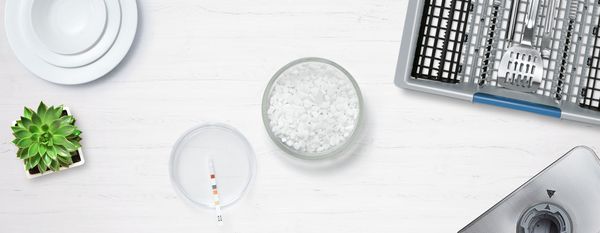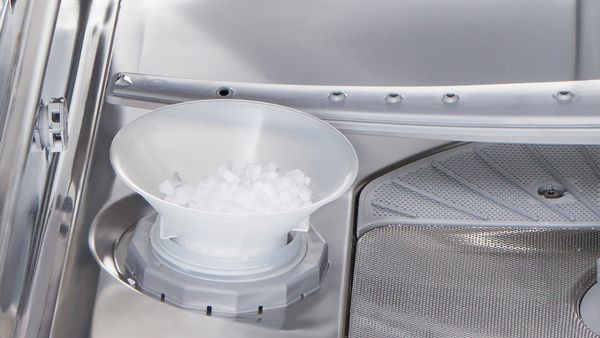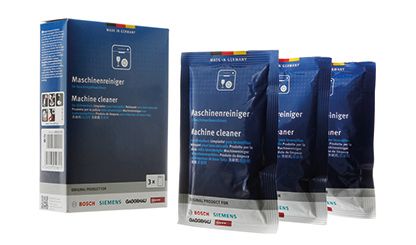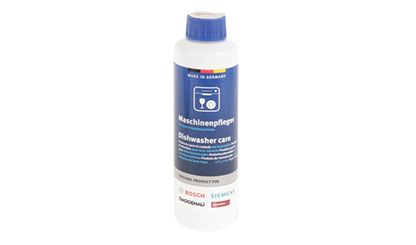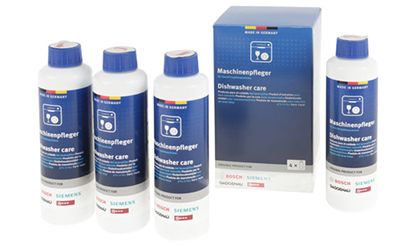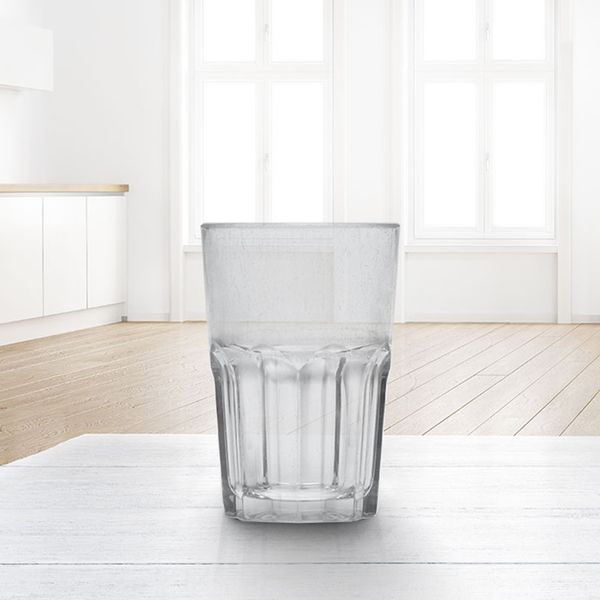
Why you need to use dishwasher salt.
Dishwasher salt refreshes the dishwasher's water softening system. A dishwasher needs soft water so glasses come out shiny, clean and free from water spots.
Hard water contains high levels of calcium carbonate, also known as lime. Using hard water in a dishwasher can lead to limescale build-up on utensils and can potentially damage the appliance. That's why it's crucial to soften water that has a hardness above a certain threshold.

Dishwasher salt ingredients.
Dishwasher salt, like table salt, consists of sodium chloride. However, dishwasher salt comes in coarse granules to prevent clogging the dishwasher salt tank while table salt is finely ground. Though it might be tempting in a pinch, do not use table salt in your dishwasher. Doing so could damage the water softening system.
Step-by-step: using dishwasher salt.
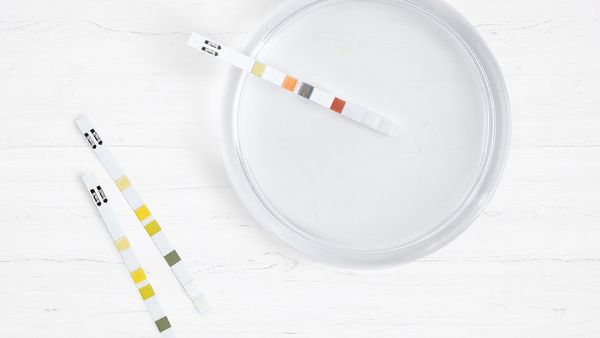
Step 1
1. Determine the water hardness.
Before using your dishwasher for the first time, you need to find out how hard your water is. There are two ways to do so:
- Conduct a quick home test with a water hardness test strip.
- Look at your water bill: it often indicates the hardness.
- Ask your water supplier.
Step 2
2. Adjust your dishwasher's settings.
Once you know the water hardness, adjust your dishwasher settings accordingly. The rule of thumb is the harder the water, the higher the setting and the more salt your dishwasher will go through. Refer to the water hardness table in the user manual to determine which setting to use.
Step 3
3. Add salt using a dishwasher salt funnel.
The tank for dishwasher salt is accessed via the dishwasher floor. Unscrew the cap, and using a dishwasher salt funnel, pour in dishwasher salt. To prevent potential damage to the inside of the machine, always run a load right after filling the salt tank. This way residual salt won't corrode the dishwasher's metal interior.
Pro tip: When the refill light or symbol for salt on your dishwasher control panel illuminates, top up the salt.
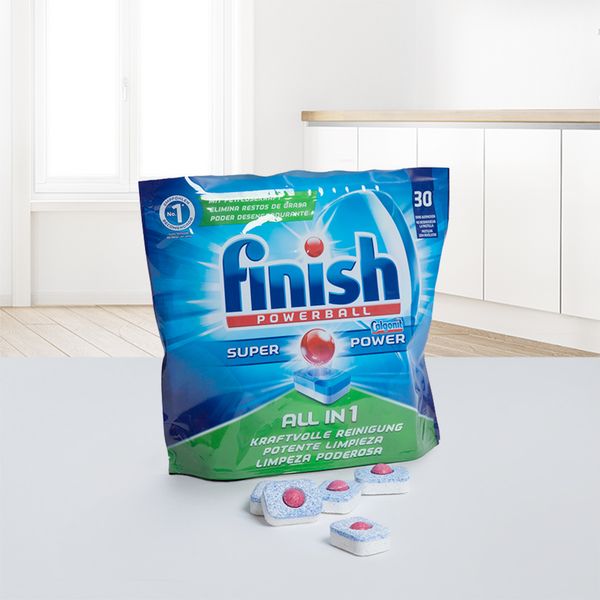
All-in-one dishwasher tablets and dishwasher salt.
Many all-in-one tabs contain dishwasher salt. So you might wonder: do I need dishwasher salt if I use tablets? It depends on your water hardness. If you live in a hard water area, salt is essential – for spotlessly clean glasses every day and an appliance that will work reliably long term. In moderately soft areas, all-in-one dishwasher tabs suffice.
FAQs.
It depends on how hard your water is:
- Hard water: Your dishwasher needs dishwasher salt to clean as best as possible and prevent damage from limescale buildup.
- Moderately soft/slightly hard: All-in-one tabs are typically enough.
- Soft water: It's not necessary to add dishwasher salt.
Refer to your dishwasher user manual and contact your local water supplier for more details.
No, using table salt in the dishwasher is not recommended. Although both are the same chemical compound, table salt is much finer and could clog the salt tank in the appliance.
While they are the same chemical compound – sodium chloride – dishwasher salt granules are coarser. This helps it to dissolve properly and prevents it from blocking your dishwasher's softener system.
We strongly recommend exclusively using dishwasher salt. It's widely available at most supermarkets and very affordable.
A washing machine doesn't have a salt tank. Using dishwasher salt to remove limescale could corrode the washing machine drum and might leave residue on clothes. It's therefore strongly not advisable.
If you have determined your water is soft – by measuring with a home test strip, referring to your water bill or asking your water service – you typically don't need to fill up the dishwasher salt tank.
Refer to your user manual for clear guidance concerning your appliance and your area.
Fill up the salt compartment until the water is displaced and runs out. When in doubt, refer to your dishwasher's user manual. Refill the salt compartment when the salt refill light illuminates on the dishwasher control panel.
